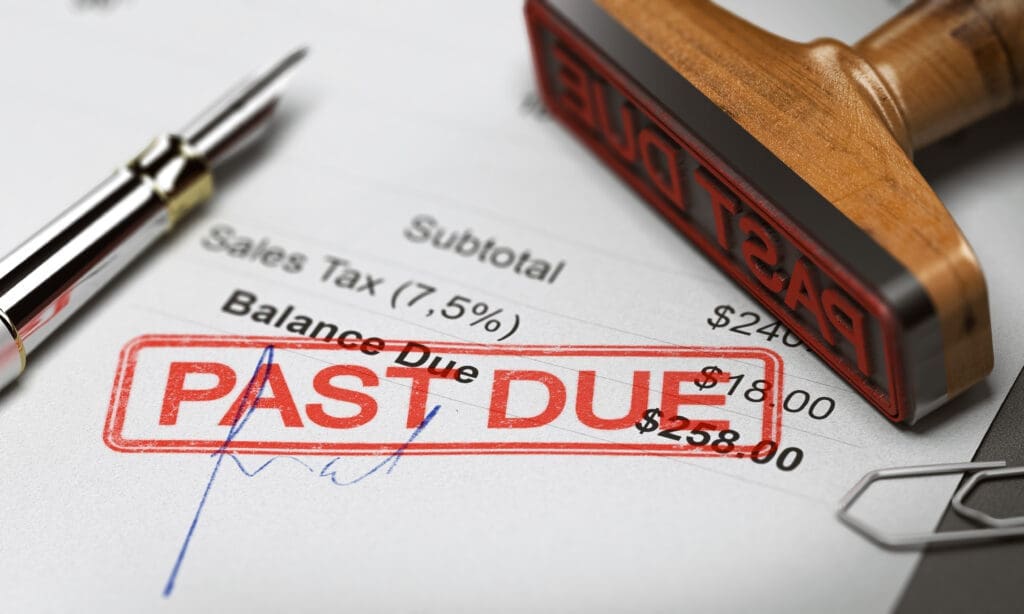Last updated on August 10th, 2022 at 02:05 pm
 For this weeks’ post, we’re giving you one of our handouts from the Financial Coordinator Training Course on our MGE’s online training platform, DDS Success.
For this weeks’ post, we’re giving you one of our handouts from the Financial Coordinator Training Course on our MGE’s online training platform, DDS Success.
It’s called “Collecting Past Due Balances” and provides a simple, yet effective procedure for retiring past due accounts.
The Financial Coordinator Training Course trains every aspect of the job, including financial arrangements, collections, handling patient accounts, estimating insurance benefits, billing and following up with insurance companies, and managing the position. To learn more about DDS Success, schedule a free demo here.
And before you get going on this, a couple of points:
- Always ensure you have good financial arrangements before treatment commences to avoid big balances, and
- Ensure that your patient is truly “sold” on doing the treatment in the first place (for help with this, click here).
Alright, with that said, here’s the handout “Collecting Past Due Balances.”
Collecting Past Due Balances
 If your office is making solid financial arrangements with patients prior to commencing with treatment, and in accordance with workable financial policy you will find that you rarely end up with any substantial patient balances left on account.
If your office is making solid financial arrangements with patients prior to commencing with treatment, and in accordance with workable financial policy you will find that you rarely end up with any substantial patient balances left on account.
(Related: 7 Ways to Make Patient Financing Easer in Your Practice)
However, due to insurance companies paying less than expected (or nothing at all) or patients not keeping up with their financial obligations, you will at times end up carrying patient balances that you did not plan on.
The handlings for this as covered in the Financial Coordinator Training Course include:
- During Financial Arrangements, making sure patients know that insurance doesn’t always pay what is expected and that any remaining balance is their responsibility,
- Calling patients who have an outstanding balance,
- Sending EOB (Explanation of Benefits) letters and monthly statements, and
- Making sure account balances are correct so that patients don’t get upset and refuse to pay due to disagreements with what is reflected in their account.
PHONE CALLS ABOUT OUTSTANDING BALANCES
Assuming the patient’s account is current, and the balance is small (e.g. the insurance company paid less than expected, leaving a $25 balance on a patient’s account), you may just resolve this with an EOB letter and if not, a statement at the end of the month.
And remember before you start calling to follow patient privacy procedures as laid out by the doctor and office manager. You must stay legally compliant!
Now, the problem with calling every patient with a small balance (assuming the account is current), is that it can become a lot of work for only a little amount of money collected. You’ve already sent an EOB letter so you may wish to allow that to do its work. Some offices will only call if the balance exceeds a certain amount (for example $100), otherwise, they just send the EOB letter and statement at the end of the month if the patient didn’t pay after the EOB letter. And, again, whether you call or not, you would still send an EOB letter and statement.
As far as the amount owed to the practice that rates a phone call, this is something where you would work with the doctor and Office Manager to determine for your office. In some cases, the balance may be substantial and the patient will need to be spoken with about it anyway, as there’s nothing people dislike more than finding out they unexpectedly owe a bunch of money! They will probably need some degree of explanation as to what happened. And remember in these cases you always have Third Party Financing as an option to retire these balances.
PAST DUE ACCOUNTS
 Now, what if the patient does NOT pay their balance (assuming it is validly owed by them and not something you’re expecting from an insurance company) and the account goes over 30 days? These balances must have a resolution, meaning if the patient does NOT pay within a certain period, then the next step is applied, and then if they do not pay again, the next step is applied, and so on.
Now, what if the patient does NOT pay their balance (assuming it is validly owed by them and not something you’re expecting from an insurance company) and the account goes over 30 days? These balances must have a resolution, meaning if the patient does NOT pay within a certain period, then the next step is applied, and then if they do not pay again, the next step is applied, and so on.
(Related: Patient Financial Arrangement Tips for Your Dental Practice)
The system outlined below gives you an example of a step-by-step approach to use to collect these balances. Each letter and communication steps up the “intensity,” for lack of a better term until payment is received and/or you send them to collections.
IMPORTANT NOTE: Sending someone to collections or threatening to do so is a big step and the rules/laws regarding all of this vary from state to state (or province if you are in Canada). It is up to the doctor and the office manager to ensure that you are following the laws of your area, so make sure you know these before you apply any of these steps to ensure you are legally compliant. This is simply an example. Adapt it so that it is legally compliant and fits in with your doctor’s office environment and business model.
CALLING PATIENTS WITH PAST DUE BALANCES
As with current balances owed, you’ll want to set a threshold as to the amount owed that would rate a phone call with the doctor and office manager.
Minimally, patients with a substantial balance (for example, over $100) might be called at some point in the collection process if they are not remitting payment. As far as how many calls you make to patients in this condition, this is something to be set up as policy by your doctor.
Again, some offices will not call at all unless the patient owes over a certain amount. Some will call only once. This is more a case of determining what works best in your office, but again, the final policy as to how this is done must be minimally ratified by the doctor, via the Office Manager.
THE COLLECTIONS SYSTEM
An example of how you could set up a systemized method for collections follows. As above, the doctor would need to ensure that any part of this system that your office elects to use is legally compliant for your state or province and that it fits the doctor’s business model.
(Related: Patient Denied for Financing? Try This!)
PAYMENT DUE DATE
Note: Your practice may or may not have a “due date” for payments. Some offices use a “due date” as opposed to a 30-day rolling statement cycle (i.e. payment is due prior to the next statement date). This allows the office time between statements to get accounts in order.
Whether your practice employs this idea of a “due date” (or not), along with how you want to approach overdue accounts in general is something you’ll want to work on with the Office Manager and doctor. In our example here, we’re using the 18th of the Month as our “due date” with a statement date of the 28th. So, a statement on the 28th, payment due the following month by the 18th.
COLLECTIONS SYSTEM EXAMPLE
 Your office does treatment for a patient on April 10, collects the co-payment, and bills the insurance company. On May 5th, you receive the EOB with payment (or no payment) leaving a balance due from the patient. At some point on the 5th, you send out an EOB letter to this patient as detailed in the Financial Coordinator Training Course. If you had not received payment by the May 28th when statements are generated, you would bill them with a standard monthly statement.
Your office does treatment for a patient on April 10, collects the co-payment, and bills the insurance company. On May 5th, you receive the EOB with payment (or no payment) leaving a balance due from the patient. At some point on the 5th, you send out an EOB letter to this patient as detailed in the Financial Coordinator Training Course. If you had not received payment by the May 28th when statements are generated, you would bill them with a standard monthly statement.
If by June 18th (payment due date), you had still not received payment, or the patient had not contacted you to make arrangements, you would send them a “second notice letter” (which can also be found in this course).
On June 28th (statement date), if the account is still not paid, you would again send them a statement, showing their balance is now overdue. You may have some type of language on the statement indicating as such, or you might also get a rubber stamp that says, “Past Due” and stamp this statement.
If they have paid already (after the Second Notice Letter), you shouldn’t have to do this step as you would have sent them a zero-balance statement showing payment was received, preferably the day it was received. And if at any point in this process the patient pays the balance, you would send them a zero-balance statement right away showing it is paid.
Now, if by July 18th (payment due date), you had not received payment, or the patient had not contacted you to make arrangements, you would mail out the “Third Notice Letter,” along with a little slip of red paper in the envelope that says in big letters “PAST DUE NOTICE.” You can print three or four of these on a page and cut them into slips. You may also buy little slips like this that are preprinted at an office supply store.
(Related: How Your Dental Front Office is Choking Your Practice Production)
If by July 28th (statement day), you had still not received payment or communication from the patient to make arrangements, you would again send a statement with some type of language indicating that the account is past due and you may again wish to use a rubber stamp on it that says “Past Due.”
If by August 18th, you had still not received payment or communication to make arrangements, you would send out the “Final or Fourth Notice Letter.” For this final letter, you may wish to add a red slip of paper that says: “Final Notice and Demand,” similar to how you did the PAST DUE NOTICE above. Again, you may also buy little slips like this that are preprinted at an office supply store.
Finally, if you had not received payment when you go to run statements on August 28th, you could refer the account to your collections agency or collections attorney, if your office uses one. If the doctor wants to use a collections agency or collections attorney, work with the doctor and office manager to select one that works for your office.
ANALYSIS
In the example above, the account has been owing since the first statement on May 28th, 90 days prior to referring to a collection’s agency or attorney (if your office does that) on August 28th. For that matter, the patient was informed even earlier about this balance if you sent an EOB letter on May 5th.
Most dental offices have a financial policy that dictates payment is due when services are rendered as opposed to running Net 10 or Net 30, so asking for payment more or less right away probably fits in with whatever financial policy a patient signed as a part of their new patient paperwork when they first came into the practice.
If we want to get technical about this, the “due date” from their May 28th statement was June 18th. So once July 18th hit, the account was officially 30 days late. Depends on how you look at it – in your AR report, it will show up as 30+ earlier than that.
But even using the June 18th due date, if you refer the account out of the office on August 28th, you’re still looking at a 60-90-day account.
In any event, it’s a well-known concept that your chance of collecting a balance goes down in direct ratio to how long it isn’t paid, so things don’t get better with time when it comes to outstanding balances!
 The bottom line is you need a system to follow as you run the accounting area. It would have specific steps: “patient hasn’t paid by ‘X’ date, they get this letter,” and so on. And that’s really what this example is all about – providing an idea your office can use to build a system that works for your practice.
The bottom line is you need a system to follow as you run the accounting area. It would have specific steps: “patient hasn’t paid by ‘X’ date, they get this letter,” and so on. And that’s really what this example is all about – providing an idea your office can use to build a system that works for your practice.
In the big picture, you also want to do everything you can to avoid these issues in the first place. This starts with setting up solid financial arrangements and making sure patients understand that they may have a balance if insurance does not pay all that is expected.
And if at any point during this process the patient contacts the office to work out arrangements, make sure you get this done quickly! Work with them to solve this in-house if you can rather than referring it out. Don’t just automatically send the next notice if the patient is trying to resolve the issue. Most people will do their best to make their balances right. You may have to work with them a bit, but it can be done. Work with the doctor and office manager to develop a policy on how to handle patients in this situation if they end up with an unexpected balance and cannot take care of all of it in one payment.
And be wary of any overdue balances that are in dispute for any reason, or due to an accounting error and the like. Sending past due notices to someone who disagrees that they owe anything at all is an easy way to upset and lose a patient. Keep an eye out for this. Ensure your second notices and what follows are reserved only for patients that actually owe these monies – not unfiled insurance, disputed accounts, or accounting errors!
Following up on overdue balances may not the most “fun” part of the Financial Coordinator job, it’s still an important function and needs to be done!
For more practice management systems and thorough training for all of your staff, sign up for DDS Success today or schedule a free demo here.
And if you have any questions, reach out to us any time at (800) 640-1140.
Please Note: This course, provided by DDS Success, LLC, and its accompanying materials is being provided as suggestions and ideas from which to improve the success and viability of your practice. This is not to be taken as a guarantee that the information provided is appropriate to your practice. Due to the high ethical standard in business expected of DDS Success, LLC clients, it is assumed that each client and/or their staff would observe and follow applicable laws relating to employment, taxation and general business. Each practice, their owners, officers and staff are individually responsible for ensuring that any system implemented complies with the applicable federal, state and local laws, rules and regulations governing the place in which your practice is located. These suggestions do not constitute legal advice. You should seek advice from your own legal advisors as to what is appropriate to implement in your practice, prior to implementation. DDS Success, LLC is not responsible for any claims, real or otherwise, associated with this material and information or any part thereof.



How can I get the patients past due letters?
Hi Sandra! We have past due letter examples included in the Financial Coordinator Training Course on DDS Success. If you’re a DDS Success member, you can login and download those example letters. If you’d like to sign up for DDS Success, you can visit http://www.ddssuccess.com.
– Kelly, MGE Marketing